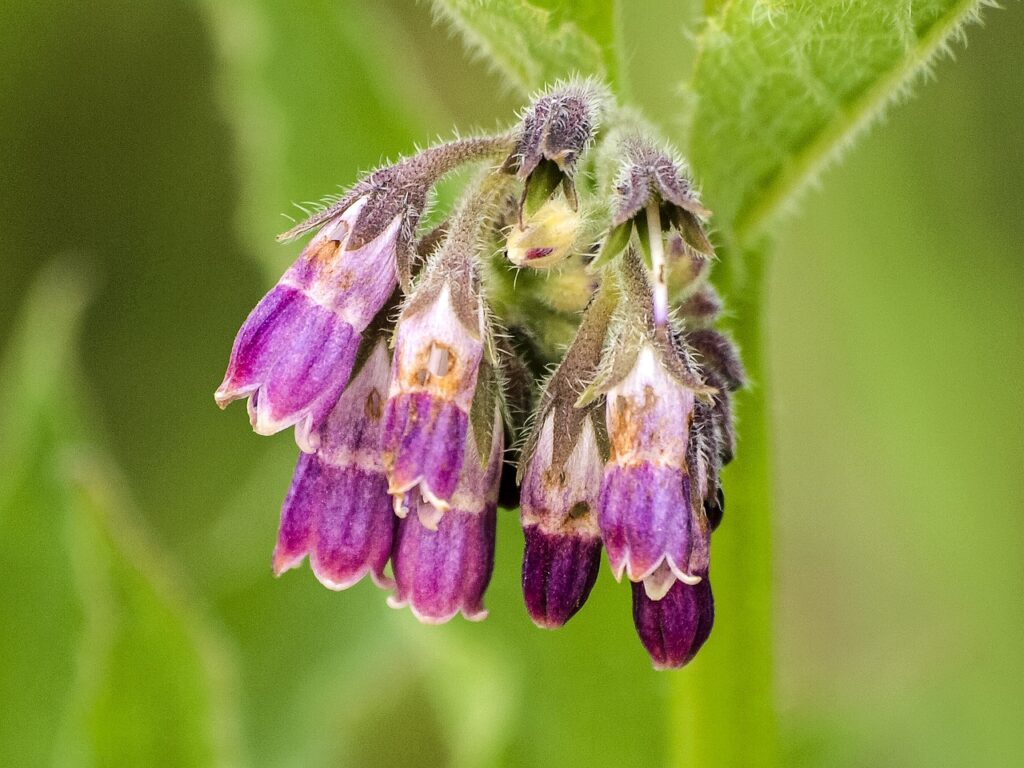The Comfrey plant (Symphytum officinale), known for its medicinal properties and large, broad leaves, is a popular choice for herbal gardens. Here’s a detailed guide on how to grow and care for Comfrey to enhance the utility and beauty of your garden.

Types of Comfrey
Comfrey plants come in various forms, each offering unique characteristics and benefits. Here are some popular types:
| Type of Comfrey | Characteristics |
|---|---|
| Common Comfrey | Traditional variety used for medicinal purposes, known for its large leaves and purple flowers. |
| Russian Comfrey | Hybrid variety, often sterile, known for vigorous growth and larger leaves. |
| Dwarf Comfrey | Smaller variety, ideal for smaller gardens and container growing. |
Growing Season
Comfrey plants have a specific growing season that ensures they thrive and develop lush foliage. Here’s a seasonal guide:
| Season | Activity |
|---|---|
| Spring | Plant new Comfrey, fertilize, start regular watering. |
| Summer | Continue watering, provide full sun to partial shade, monitor for pests. |
| Fall | Reduce watering, prepare for cooler temperatures. |
| Winter | Minimal maintenance, keep soil slightly moist, protect from frost. |
Sunlight and Water Needs
Comfrey plants thrive in full sun to partial shade and need consistent moisture to grow healthily.
- Sunlight: Full sun to partial shade.
- Watering: Keep soil consistently moist but well-drained. Water when the top inch of soil feels dry.
Soil Preferences
Comfrey plants prefer well-drained, slightly acidic to neutral soil to promote healthy growth.
| Soil Type | pH Level | Characteristics |
|---|---|---|
| Sandy loam | 6.0-7.0 | Well-draining, rich in organic matter. |
| Loamy soil | 6.0-7.0 | Balanced drainage and moisture retention. |
Fertilization and Nutrients
Comfrey plants benefit from regular feeding during the growing season to encourage vibrant growth.
| Season | Fertilization Type |
|---|---|
| Spring | Balanced slow-release fertilizer when new growth appears. |
| Summer | Fertilize monthly with a balanced liquid fertilizer. |
| Fall | Stop fertilizing to prepare for cooler weather. |
| Winter | No fertilization needed. |
Pruning and Maintenance
Regular maintenance helps keep Comfrey plants healthy and attractive. Prune as needed to remove dead or damaged leaves.
Additional Tips for Growing Comfrey
- Container Choice: Use deep pots with drainage holes for container-grown Comfrey.
- Humidity: Maintain moderate humidity around the plant by misting occasionally or using a humidity tray.
- Pest Control: Watch out for pests like aphids and slugs. Use appropriate insecticidal soap if necessary.
- Support: Generally does not need staking, but ensure the plant has enough space to spread.
Conclusion
Comfrey plants are a versatile and rewarding addition to any garden or indoor space, offering large leaves and medicinal benefits with minimal care. By choosing the right type of Comfrey and providing proper sunlight, water, and soil conditions, you can enjoy these beneficial plants for many seasons.